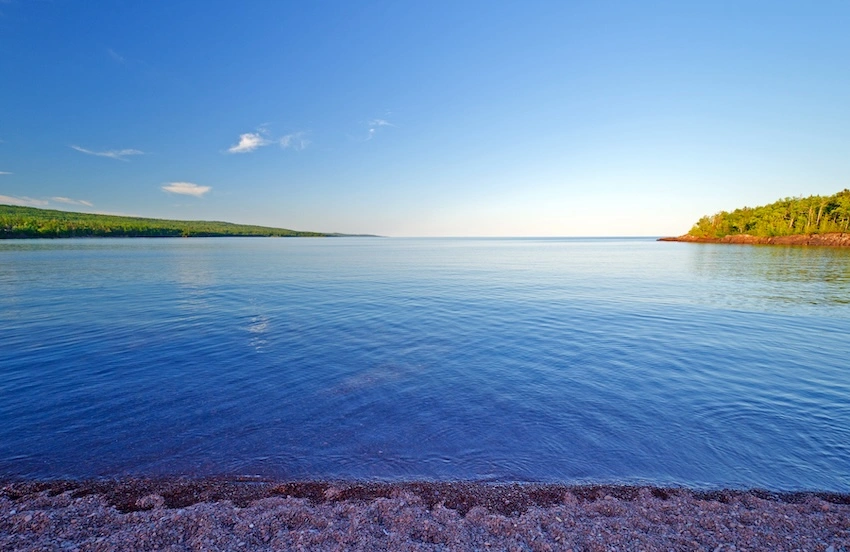
The most interesting thing about the Great Lakes Venture Capital Summit may not even be the summit itself.
It’s the people behind it and what they’ve seen.
But more importantly, what they’ve decided to do about it.
When a group of General Partners (GPs) from venture funds across Ohio, Michigan, Indiana, Illinois, Kentucky and beyond start working together, not for deals or the PR, but for the sake of the region… then that is a story in itself that needs our attention.
In fact, it may be so well aligned with our own story that we could have created it ourselves in a lab.
The Great Lakes Venture Capital Summit (GLVCS) isn’t a trade group, and it isn’t trying to be.
What it is, is a network of GP-level VCs in and around the Midwest who decided to get in the same room, build relationships, and see what happens when abundance replaces scarcity.
Adrian Fortino from Mercury Fund, one of the founding partners of GLVCS, says the idea started with a group text.
“I got a message from Tim Schigel at Refinery Ventures and Kaleb Dumot from Integrity Power Search,” he told us. “‘We have an idea that we want to run past you. We went to the Rocky Mountain Venture Summit. What a great event to get a bunch of VCs together. What if we tried to do what they’re doing in the Rockies - but for the Great Lakes?’”
It turned out to be the right moment.
Fortino had just come back from a trip that gathered VCs from around the country hosted by Customers Bank, and it reminded him how few spaces exist for Midwest-based fund managers to build real, intentional connections. Not panels. Not pitches. Community.
So they pulled in Camila Noordeloos from Grand Ventures and Chad Summe from eGateway Capital, and got to work.
It wasn’t about creating an association or an advocacy group, says Fortino. “It was: let's try to go and build some community, some fellowship among GPs in funds that are based and operating in the Great Lakes.”
A simple and yet novel idea.
That's because, although Midwest startup communities have plenty of pitch competitions, founder showcases, lists of best this and that, tech weeks and X of the Year awards… there isn’t a lot of infrastructure for the people backing these endeavors.
That’s what the Summit aims to change.
‘Moneyball’ in the VC game
What does collaboration look like in practice? According to Summe, it’s about breaking old habits.
“We can start playing above our weight and playing the game differently through collaboration,” he told us. “I'm excited about the opportunity to bring all of these capital allocators together because I feel we're going to have to play moneyball. For the Midwest to win, we have to play to our strengths. We're never going to be the Yankees. We're not going to be the Red Sox, and we're not going to be the Dodgers” he adds, referencing the film and movie of the same name where data and team dynamics were used in baseball, to extract more performance from a budget.
It’s a fitting analogy.
Especially from someone who helped grow, in his words, a ‘Silicon Valley tech company’ in Cincinnati. Thanks in part to the work of Summe, that business - Quotient Technology - grew to 400 people in Ohio despite maintaining their HQ on the west coast. The business was acquired in 2023.
Summe, also a former Procter & Gamble brand leader and Navy engineer, speaks with clarity and eloquence about the Midwest’s points of difference.
The term he uses is “regional arbitrage”. To explain further, he mentions the mismatch between the amount of capital allocated in the middle of the country, and the amount of strategic value sitting under the surface.
More than lines on a map
At the inaugural summit - held earlier this summer in French Link West Baden, Indiana - 70 investors gathered from across Minnesota, Wisconsin, Illinois, Indiana, Ohio and Michigan as well as from Pennsylvania and Kentucky. Some national names showed up too, including sponsors like JTC Group, SVB, QC Growth, Crowe, and Customers Bank.
The criteria for deciding who should be asked to attend was simple: GPs or leaders of firms, active in the region, who live in these states and would be open to collaboration.
And while the focus is on the Great Lakes as a region, it isn’t necessarily about drawing a hard line around a map.
In any case, they’re already seeing the positive impact of bringing everyone together.
Fortino says “I do think that there's a dynamic of matching the Great Lakes kind of investor to the Great Lakes founder. And I think there's actually something to be said for that. I think it comes from understanding how to solve legacy challenges… big manufacturing problems, big supply chain problems, agriculture and energy.”
While we’re certain that the next summit is already in the planning phase, this is clearly bigger than any single individual event.
It’s a quiet acknowledgment that capital markets in the Midwest don’t need to look like New York or San Francisco. They can - and should - play their own game.
A little less ‘I got mine.’
A little more ‘Let’s build this together.’
Trending Stories



